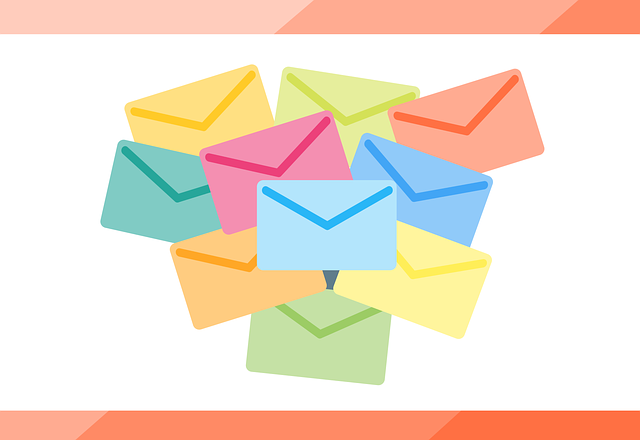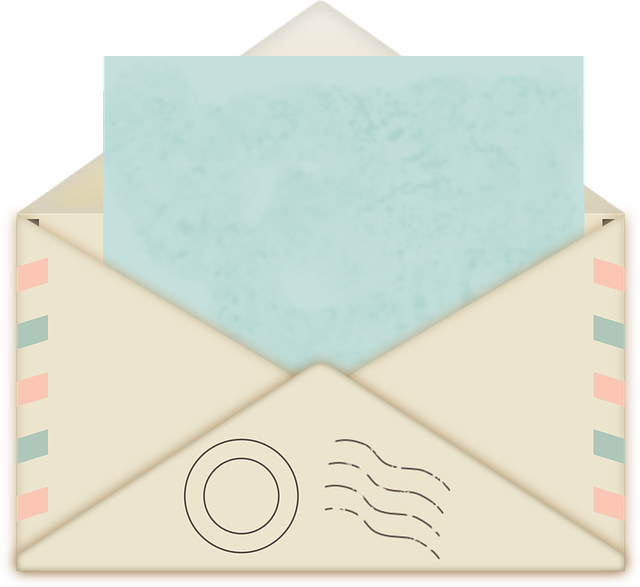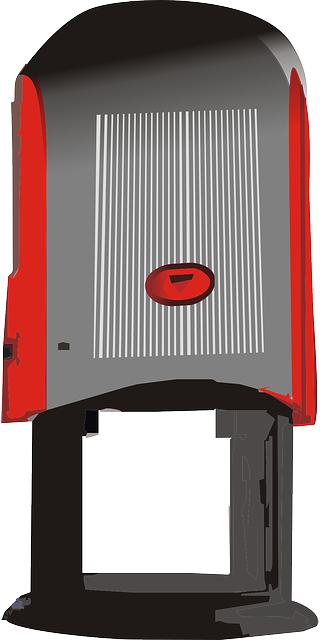So, you think creating engaging email designs is a piece of cake? Well, think again! In today’s fast-paced digital world, where attention spans are shorter than ever, you need to pull out all the stops to capture your audience’s attention. Lucky for you, we’ve got the top tips to make your email designs stand out from the cluttered inbox.
First things first, let’s talk visuals. Eye-catching images and graphics are your secret weapons to make your subscribers stop mid-scroll and take notice. And don’t forget about mobile optimization! With everyone glued to their smartphones, you need to ensure your email looks just as stunning on the small screen.
But it doesn’t end there. Personalization is key. Tailor your emails to your recipients’ preferences, making them feel like you’re speaking directly to them. And when it comes to calls-to-action, make them clear, compelling, and impossible to resist.
Lastly, keep your layout clean and organized, so your readers can easily navigate your content without feeling overwhelmed. And don’t forget to test and analyze your designs to see what’s working and what needs improvement.
So, are you ready to take your email designs to the next level? Let’s dive in and create emails that will have your subscribers begging for more!
Key Takeaways
- Eye-catching visuals and graphics are essential for engaging email designs.
- Personalization through segmentation and dynamic content increases engagement.
- Clear and compelling calls-to-action increase click-through rates.
- Testing and analyzing designs through A/B testing is crucial for success in email marketing.
Use Eye-Catching Visuals
Wow your audience with eye-catching visuals that’ll instantly grab their attention and leave them wanting more.
Creative imagery and carefully selected color schemes are key to creating engaging email designs. Use striking photographs, illustrations, or graphics that reflect your brand and capture the essence of your message.
Avoid clutter and keep your design clean and concise, allowing your visuals to take center stage. Experiment with bold colors and contrasting combinations to make your emails visually appealing and memorable.
Remember, visuals are powerful tools that can enhance your message and create a lasting impact.
Now that you’ve captured their attention with stunning visuals, it’s time to optimize your email design for mobile devices.
Optimize for Mobile Devices
Ensure your email designs are mobile-friendly to capture your audience’s attention on the go. With the increasing use of smartphones and tablets, it’s crucial to optimize your email designs for mobile devices. By improving responsiveness and implementing mobile optimization techniques, you can deliver a seamless experience to your subscribers.
Mobile-friendly emails load quickly, display properly, and are easy to navigate, making it more likely for recipients to engage with your content. Take advantage of mobile design best practices such as using a single column layout, larger fonts, and touch-friendly buttons.
By creating emails that look great on mobile, you can maximize the impact of your messages and increase the chances of conversions.
Now, let’s dive into the next section about how to personalize your emails.
Personalize Your Emails
When it comes to personalizing your emails, there are three key points to keep in mind.
First, segment your audience to ensure targeted messaging that resonates with each group.
Second, use dynamic content to tailor your emails to the individual recipient, increasing engagement and relevance.
And finally, don’t forget to include personalized subject lines and greetings to grab their attention right from the start.
By implementing these strategies, you’ll create emails that feel personalized and truly connect with your audience.
Segment Your Audience for Targeted Messaging
By segmenting your audience, you can tailor your email design to create a personalized experience that resonates with each individual recipient. Segmentation strategies allow you to categorize your audience based on various factors such as demographics, purchase history, or engagement level. This targeted messaging technique ensures that your emails are relevant and valuable to each segment, increasing the chances of engagement and conversion.
-
Divide your audience based on demographics, such as age, location, or gender, to create targeted content that appeals to their specific needs and preferences.
-
Segment your subscribers based on their engagement level, sending different emails to active subscribers versus those who haven’t interacted in a while, to re-engage them and prevent them from unsubscribing.
-
Use purchase history to segment your audience and send personalized recommendations or exclusive offers based on their past purchases, increasing the chances of repeat business.
-
Create segments based on customer lifecycle stages to send tailored messages that address their specific needs and guide them through the buyer’s journey.
By segmenting your audience and using targeted messaging techniques, you can ensure that your email designs are engaging and resonate with each recipient. This sets the stage for the next step: using dynamic content to tailor emails to individuals.
Use Dynamic Content to Tailor Emails to Individuals
Using dynamic content in your emails allows you to personalize the message and visuals for each individual recipient, making them feel like the email was created just for them. This level of personalization can greatly benefit your email marketing efforts.
By tailoring the content to match each recipient’s preferences, interests, and past interactions with your brand, you can increase engagement and conversions. Dynamic content allows you to showcase different products or offers based on the recipient’s browsing history or previous purchases, making the email more relevant and enticing.
Additionally, you can use dynamic content to include personalized recommendations or suggestions based on their demographics or behavior. These personalization strategies not only make your emails more engaging, but also help build stronger relationships with your audience.
Now, let’s move on to the next section where we will discuss the importance of including personalized subject lines and greetings.
Include Personalized Subject Lines and Greetings
Crafting personalized subject lines and greetings adds a touch of familiarity and warmth to your emails, like a friendly wave from a familiar face. It’s important to make your subscribers feel valued and connected right from the start.
Here are some top tips to help you create personalized subject lines and greetings that will engage your audience:
- Use the recipient’s name in the subject line or greeting to make it feel more personal.
- Segment your email list based on preferences or previous interactions to tailor your subject lines and greetings to each individual.
- Experiment with emojis in subject lines to catch the reader’s attention and add a touch of fun.
- Incorporate personalized details based on the recipient’s purchase history or browsing behavior.
- Test different variations to see which subject lines and greetings resonate the most with your audience.
By including personalized subject lines and greetings, you’ll grab your subscribers’ attention and make them feel special.
Now, let’s dive into how to create clear and compelling call-to-actions that will drive action from your audience.
Create Clear and Compelling Call-to-Actions
Make sure your call-to-action stands out by using bold colors and eye-catching fonts that will entice your readers to click and explore further. Creating effective buttons is crucial in grabbing your audience’s attention. Use persuasive language to compel them to take action, such as ‘Shop Now’ or ‘Learn More.’
Additionally, consider the placement of your call-to-action. Position it prominently within your email design, making it easy for readers to find and click on. Remember that a clear and compelling call-to-action can significantly increase your click-through rates and overall engagement.
Now that you’ve mastered creating an enticing call-to-action, let’s move on to the next step: keeping your layout clean and organized.
Keep Your Layout Clean and Organized
Maintaining a clean and organized layout is essential for ensuring that your readers can easily navigate and digest the content of your email.
A clean design with a minimalist aesthetic not only looks visually appealing but also helps to keep the focus on the most important elements of your message.
Use ample white space, clear headings, and a logical flow to guide your readers through the email.
Avoid cluttering the layout with excessive images or text that can overwhelm your audience.
By keeping your layout clean and organized, you create a visually pleasing experience that allows your readers to absorb your message effortlessly.
Once you’ve perfected your design, it’s time to test and analyze its performance to ensure that it’s effective in engaging your audience.
Test and Analyze Your Designs
When it comes to email design, testing and analyzing your designs are crucial for success. Conducting A/B testing allows you to determine which designs are most effective in engaging your audience.
By monitoring email metrics and user engagement, you can gain valuable insights into what is working and what needs improvement.
With this data in hand, you can continuously refine and improve your designs, ensuring that your emails are always optimized for maximum impact.
Conduct A/B Testing to Determine Effective Designs
To ensure the effectiveness of your email designs, you should conduct A/B testing. This allows you to compare different design variations and determine the most engaging option. A/B testing offers several benefits. It helps you understand what design elements resonate with your audience, optimize your email campaigns, and increase conversion rates.
However, conducting A/B testing also comes with its challenges. These include the need for a large enough sample size and the time it takes to analyze the results.
To successfully conduct A/B testing for your email designs, follow these steps:
-
Define your goal: Clearly outline what you want to achieve with your email design and focus your testing on that specific aspect.
-
Create variations: Develop different design options that you want to compare against each other.
-
Split your audience: Randomly segment your email list and send each variation to a different group.
-
Analyze the results: Monitor key metrics like open rates, click-through rates, and conversions to determine which design is more effective.
By conducting A/B testing, you can gather valuable insights to improve your email designs and enhance user engagement.
In the next section, we’ll discuss how to monitor email metrics and user engagement to further optimize your campaigns.
Monitor Email Metrics and User Engagement
Keep an eye on your email metrics and user engagement to ensure you’re on the right track with your email campaigns. This will help paint a clear picture of how your audience is responding to your designs.
Monitoring email deliverability is crucial to determine if your emails are reaching your subscribers’ inboxes. Analyzing metrics such as open rates, click-through rates, and conversion rates can provide valuable insights into the effectiveness of your designs.
Additionally, tracking user engagement, such as the time spent reading emails or the actions taken after opening them, can help you understand how well your designs are captivating your audience.
By leveraging email automation tools, you can easily gather and analyze these metrics to make data-driven decisions for your future designs. Continuously improving and refining your designs based on these insights will enable you to create even more engaging and impactful emails.
Continuously Improve and Refine Your Designs
Refining your designs is the key to captivating your audience and leaving a lasting impression. To optimize your email designs and ensure they’re engaging, consider these design experimentation techniques:
-
Play with color palettes: Experiment with different color combinations to evoke certain emotions and create eye-catching designs. Use contrasting colors to draw attention to important elements.
-
Test different layouts: Try out various layouts to find the one that best showcases your content. Consider using a grid system to keep your design organized and visually appealing.
Incorporating design optimization and experimentation into your email designs will help you constantly improve and refine your approach. By regularly testing and tweaking your designs, you can ensure that your emails are visually appealing, capturing your audience’s attention and boosting engagement.
Frequently Asked Questions
How can I ensure my email design stands out and catches the recipient’s attention?
To make your email design truly captivating, think outside the box. Use visuals that pop like fireworks, catching your recipient’s attention from the get-go. Incorporate eye-catching colors, bold fonts, and striking images that leave a lasting impression.
Don’t forget to add interactive elements, like buttons or GIFs, to invite engagement. By creating a visually stunning and interactive email, you’ll ensure your message stands out in a sea of mundane inbox clutter.
What are some best practices for optimizing email designs for mobile devices?
To optimize your email designs for mobile devices, consider using responsive design techniques. This ensures that your emails will adapt and look great on any screen size.
Additionally, focus on email deliverability optimization to ensure that your emails reach the recipient’s inbox.
By following these best practices, you can create engaging and visually appealing emails that catch the attention of your mobile audience.
Don’t miss out on the opportunity to make a lasting impression!
How can I effectively personalize my email designs to make them more engaging for recipients?
To effectively personalize your email designs and make them more engaging, you need to use personalization techniques and create content that resonates with recipients.
Start by addressing recipients by their name in the subject line or greeting.
Tailor the content to their preferences and interests, offering relevant recommendations or exclusive offers.
Use dynamic content and segmentation to deliver personalized experiences.
By making your emails feel more tailored and relevant, you’ll capture the attention of recipients and increase engagement.
What are some effective techniques for creating clear and compelling call-to-actions in email designs?
To create effective buttons in your email designs, start by writing compelling copy that clearly conveys the action you want recipients to take. Use action-oriented words like ‘get started,’ ‘shop now,’ or ‘learn more’ to grab their attention.
Keep the copy concise and persuasive, focusing on the benefits they’ll receive by clicking the button. Use contrasting colors to make the button stand out, and ensure it’s large enough to be easily tapped on mobile devices.
Are there any specific tips for maintaining a clean and organized layout in email designs?
To maintain a clean and organized layout in your email designs, streamline your content by focusing on the essentials. Keep paragraphs short and use bullet points or numbered lists to break up information.
Utilize whitespace effectively by leaving enough space between elements, allowing your design to breathe. This not only creates a visually appealing layout but also makes it easier for recipients to read and navigate your email.
Remember, simplicity is key when it comes to maintaining a clean and organized design.
Conclusion
So there you have it, some top tips for creating engaging email designs.
By incorporating eye-catching visuals, optimizing for mobile devices, personalizing your emails, creating clear and compelling call-to-actions, and keeping your layout clean and organized, you can grab your readers’ attention and keep them engaged.
But, you might be thinking, ‘What if I don’t have the design skills?’ Don’t worry! There are plenty of user-friendly email design tools available that can help you create stunning emails without any coding knowledge.
So go ahead, try out these tips and watch your email engagement soar!









